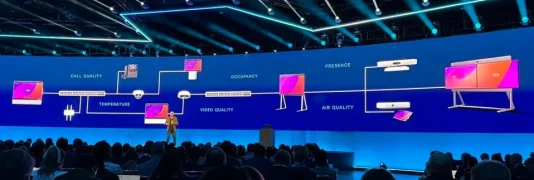There has been
a lot written about the possibility of Microsoft not supporting the Windows 8 Desktop environment on the
ARM architecture. If true, this could impact Microsoft, ARM and ARM’s licensees and Texas Instruments, NVIDIA, and Qualcomm are in the best position to challenge the high end of the ARM stack and are publicly supported by Microsoft. One question that hasn’t been explored is, why would Microsoft even consider something like this? It’s actually quite simple and makes a lot of sense the position they’re in; it’s all about risk-return and the future of phones and living room consoles.
The Threat to Microsoft
The real
short and mid term threat isn’t from Macs stealing significant Windows share from Microsoft, it’s all about the Apple iPad and iOS. It could also be a little about Android, but so far, Android has only seen tablet success in platforms that are little risk to a PC, like the
Amazon Kindle Fire. Market-wise, the short term threat is about consumer, too, not business. Businesses work in terms of years, not months. The reality is that while long term, the
phone could disrupt the business PC, short term it won’t impact where Microsoft makes their profits today. Businesses, short term, won’t buy three devices for their employees and therefore tablets will most likely get squeezed there. Business employees first need a PC, then a smart phone, and maybe a few a tablet. There could be exceptions, of course, primarily in verticals like healthcare, retail and transportation.
What About Convertibles?
One wild-card are business
convertibles. Windows 8 has the best chance here given Microsoft’s ownership on business and if you assume Intel or AMD can deliver custom SOCs with low enough power envelopes, thermal solutions and proper packaging for thin designs. Thinking here is that if business wants a convertible, they’ll also want Windows 8 Desktop and more than likely backward compatibility, something only X86 can provide. So net-net, Microsoft is covered here if Intel and AMD can deliver.
Focus is Consumer and Metro Apps
So the focus for Microsoft then is clearly consumer tablets, and Microsoft needs a ton of developers writing high quality, Metro apps to compete in the space. Metro is clearly the primary Windows 8 tablet interface and Desktop is secondary, as it’s an app. Developers don’t have money or time to burn so most likely they will have to choose between writing a Metro app or rewriting or recompiling their desktop to work with ARM and X86 (Intel and AMD) desktop. It’s not just about development; it’s as expensive for devs to test and validate, too. Many cases it’s more expensive to test and validate than it is to actually develop the app. Strategically, it then could make sense for Microsoft to push development of the Metro apps and possibly by eliminating the Desktop on ARM option, makes the dev’s decision easier.
Strategically, It’s About Phones and the Living Room in the End
Windows 8, Windows Phone 7, and XBOX development environments are currently related but not identical. I would expect down the road we will see an environment that for most apps that don’t need to closely touch the hardware, you write once and deploy onto a Microsoft phone, tablet, PC and XBOX. The unifier here is Metro, so getting developers on Metro is vitally important.
If Microsoft needed to improve the chances developers will swarm to Metro and do it by taking a risk by limiting variables, let’s say by eliminating ARM desktop support, it makes perfect sense.
Patrick founded the firm based on his real-world world technology experiences with the understanding of what he wasn’t getting from analysts and consultants. Ten years later, Patrick is ranked #1 among technology industry analysts in terms of “power” (ARInsights) in “press citations” (Apollo Research). Moorhead is a contributor at Forbes and frequently appears on CNBC. He is a broad-based analyst covering a wide variety of topics including the cloud, enterprise SaaS, collaboration, client computing, and semiconductors. He has 30 years of experience including 15 years of executive experience at high tech companies (NCR, AT&T, Compaq, now HP, and AMD) leading strategy, product management, product marketing, and corporate marketing, including three industry board appointments.






















































































